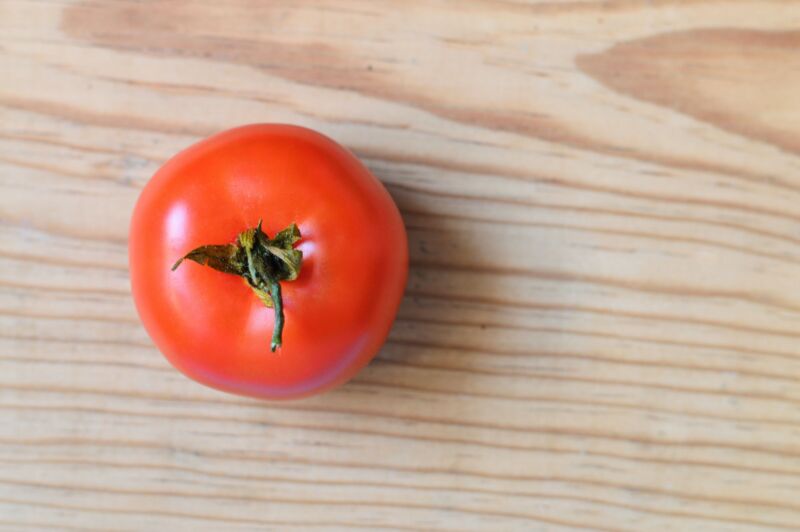The 8 Best Tomato Substitutes to Use When Cooking
Tomatoes are one of the most commonly used ingredients in cooking. Their sweet, tangy flavor and bright red color bring life to dishes ranging from sauces and soups to salads and sandwiches. However, some people cannot or prefer not to consume tomatoes due to allergies or taste preferences. Luckily, there are many excellent stand-ins to use when a recipe calls for tomatoes.
When selecting a tomato substitute, first consider any dietary restrictions you may have. If you want to avoid nightshades, olives would be a better option than bell peppers. Next, think about the texture and acidity the tomatoes provided in the original recipe. Tomato paste often adds body and umami flavor, while diced tomatoes offer bursts of juice. Finally, factor in your own tastes – if you dislike certain flavors like concentrated vinegar, that swap may not work well.
With a bit of experimenting, you can find satisfying tomato replacements to suit your needs. Here are some of the best options to try.
Tamarind Paste Offers Sweet and Sour Tomato Tang
If you want to replicate both the sweetness and acidity of tomatoes, tamarind paste is an excellent choice. Tamarind comes from the pod-like fruit of tamarind trees, which grow in tropical climates. It has a unique sour yet fruity taste.
The main advantages of tamarind paste are its convenience and long shelf life. Look for it in the international section of grocery stores, especially those carrying Latin American, Asian, and Indian foods. Once opened, it will keep for months in the refrigerator. This makes it easy to have on hand for whenever you need a quick tomato substitute.
Just a small spoonful of rich, sticky tamarind paste can provide the right balance of sweet and tart flavor missing from a recipe when you remove the tomatoes. Start with a little and adjust amounts as needed. It works well in savory sauces, curries, soups, and stews.
Surprising umami from Olives
At first glance, olives may not seem like an obvious substitute for tomatoes. However, they can lend a pleasantly bright, acidic taste along with a touch of umami. If you want to avoid nightshades but like the umami punch tomatoes deliver, olives are worth a try.
Green olives, kalamata olives, and any brined or oil-cured olives can be used. Chop, slice, or blend them depending on the texture needed. Olives pair especially well with Mediterranean and Middle Eastern dishes. They are delicious in salad dressings, pasta sauces, tapenades, bruschetta toppings, and more. Just be sure to adjust any other seasonings to balance the strong olive flavors.
Pumpkin Puree as Tomato Paste
When a recipe calls for tomato paste or canned tomatoes for thickness, such as in a chili or sauce, pumpkin puree can make an ideal substitute. Pumpkins originated in North America and were prized by Native Americans for their versatility.
Today, canned pumpkin puree is readily available year-round. It provides a mildly sweet base along with nutritional benefits. Pumpkins contain high levels of vitamin A from carotenoids, unlike tomatoes.
For best results, add a splash of vinegar or lemon juice to pumpkin puree before using it in place of tomato paste. This helps replicate the acidity that tomatoes would normally provide. Then simply use the pumpkin puree as you would tomato paste or canned tomatoes in the rest of the recipe.
Tart and Versatile Unripe Mangoes
Originating in southern Asia, mangoes come in many varieties ranging in texture and flavor. Ripe mangoes with their sunny orange flesh are deliciously juicy and sweet. But unripe green mangoes have a sour taste similar to tomatoes.
Look for firm, green mangoes to use as a tomato replacement. They work especially well minced or pureed in chutneys, curries, rice dishes, and other Indian or Southeast Asian cuisine. Much like tomatoes, unripe mangoes provide tartness and moisture without an overpowering flavor.
If you can’t find green mangoes, you can mimic their sour taste by blending ripe mango with lemon juice and a pinch of chili powder. This makes a quick curry base or pasta sauce when tomatoes aren’t an option.
Stock and Vinegar for Instant Tomato Flavor
For a speedy tomato-esque liquid, you can cheat by adding store-bought or homemade stock along with vinegar. This shortcut adds back the savory umami taste and bright acidity that tomatoes provide.
To make a quick substitute stock, simmer tomato peelings and/or red bell pepper trimmings in water for 15 minutes. Strain and combine with vinegar to taste. Chicken, vegetable, or beef broth also work nicely.
This simple tomato “imposter” liquid has many applications. Use it anywhere you’d typically add tomato juice, crushed tomatoes or tomato sauce. For example, try it in soups, braises, risottos, gravies, and stew recipes of all kinds.
Cheesy Umami Flavor in Salads and Sandwiches
In salads, sandwiches, and other dishes where raw tomatoes lend bursts of juicy sweetness, you can turn to cheese for umami flavor instead. Aged Italian cheeses like Parmesan and Pecorino work well, crumbled over salad greens or shaved onto sandwiches. Feta cheese provides a similar tangy, salty bite too.
Just take care not to overload the dish with too much cheese, as it can quickly become overpowering. A light sprinkle here and there in the right spots can give just enough rich, savory tomato essence without excess.
Red Bell Peppers Offer Both Texture and Taste
With their crunchy flesh and mildly sweet flavor, red bell peppers can mimic both the texture and taste of tomato pieces. Plus, they add great color.
To use them as a swap,dice, puree or roast and blend red bell peppers. Roasted red peppers have an extra depth of flavor. If needed, balance out the pepper’s flavor by adding a pinch of sugar, salt, and lemon juice.
You can substitute prepared red pepper puree wherever tomato paste or tomato sauce is required. Or simply use diced fresh red bell peppers in place of tomato chunks in dishes like bruschetta, pasta salad, frittatas, chili and shakshuka. Their versatility makes them one of the best stand-ins across many types of recipes.
Canned Tomatoes for Those without Allergies
If nightshade or tomato allergies are not a concern, canned whole, crushed, or diced tomatoes can stand in for fresh. Draining off some of the juice concentrates their flavor.
Canned tomatoes tend to be picked at peak ripeness, and cooking them down intensifies their natural sugars. This makes them ideal anywhere cooked tomato flavor and body is needed, like stews, curries, and homemade tomato sauce or paste.
Just take care to season them well and adjust consistency by simmering to reduce excess liquid or thinning with stock as needed. Since canned tomatoes are pre-cooked, you may need to cook recipes a bit longer for flavors to meld.
Conclusion
Tomatoes offer unique qualities to recipes with their acidic juice, bright color, smooth texture, and sweet, earthy flavors. When you need to avoid them, tomato substitutes may not replicate every aspect perfectly. However, they can still provide delicious flavor, nutrition, and the right textural components.
With creative use of ingredients like tamarind, olives, pumpkin, unripe mango, bell peppers and other tomato-esque foods, you can craft flavorful dishes everyone can enjoy. The options shared here merely scratch the surface of possibilities.
Hopefully these tomato stand-in suggestions inspire you to experiment more in your cooking. Tweak amounts and additions like vinegar and spices until you find replacements that truly cater to your personal taste. With so many options to try, you’re sure to find satisfying ways to craft fabulous recipes minus the tomatoes.






